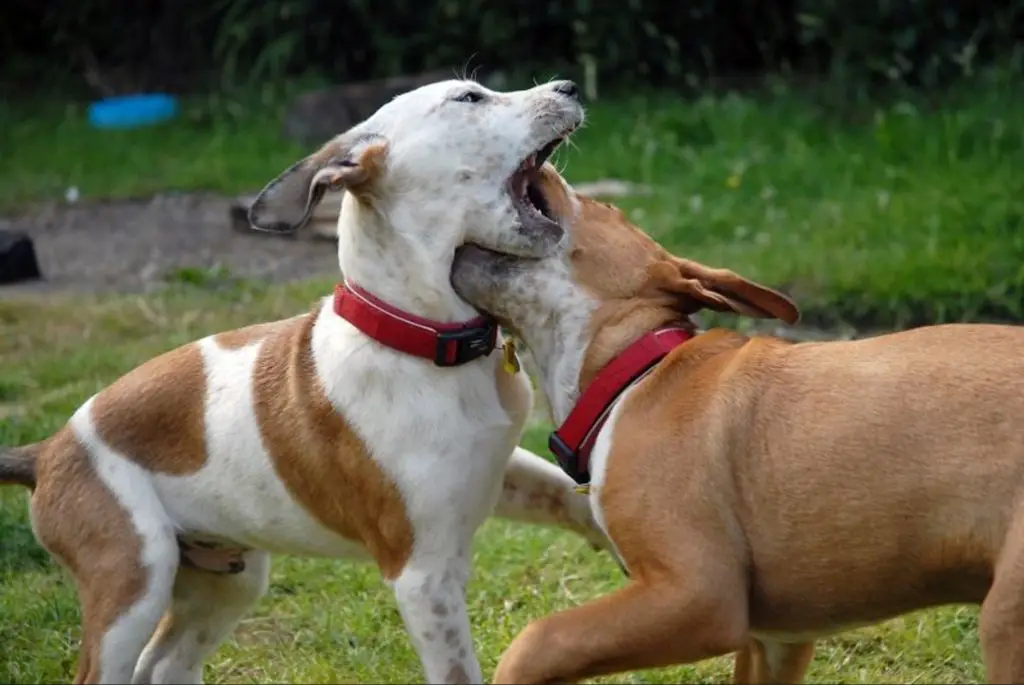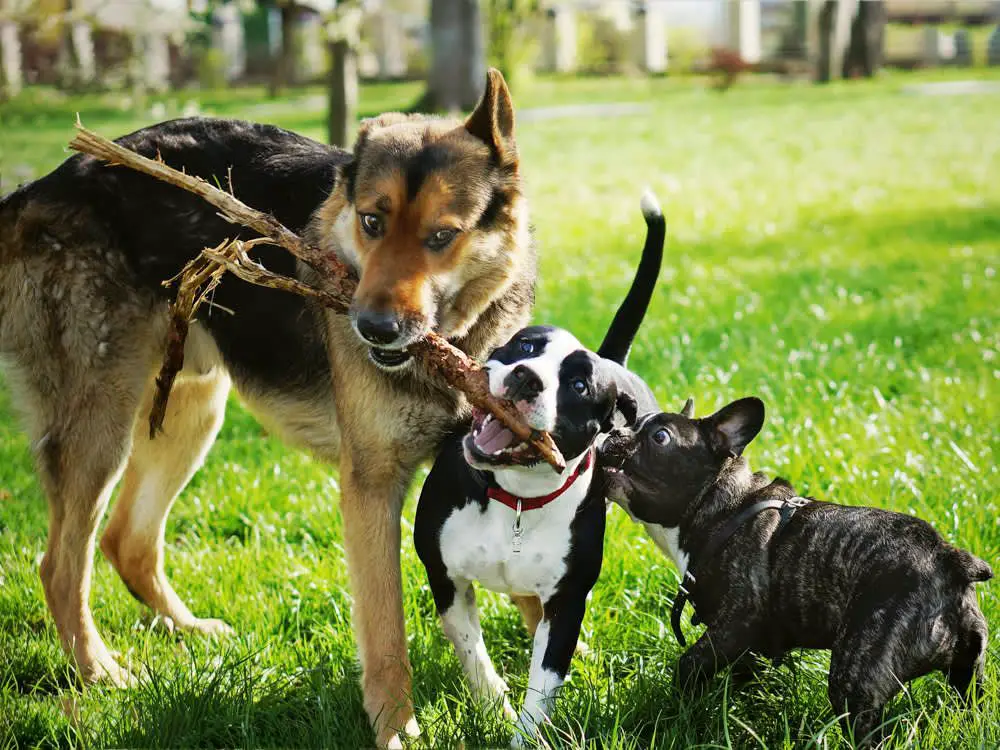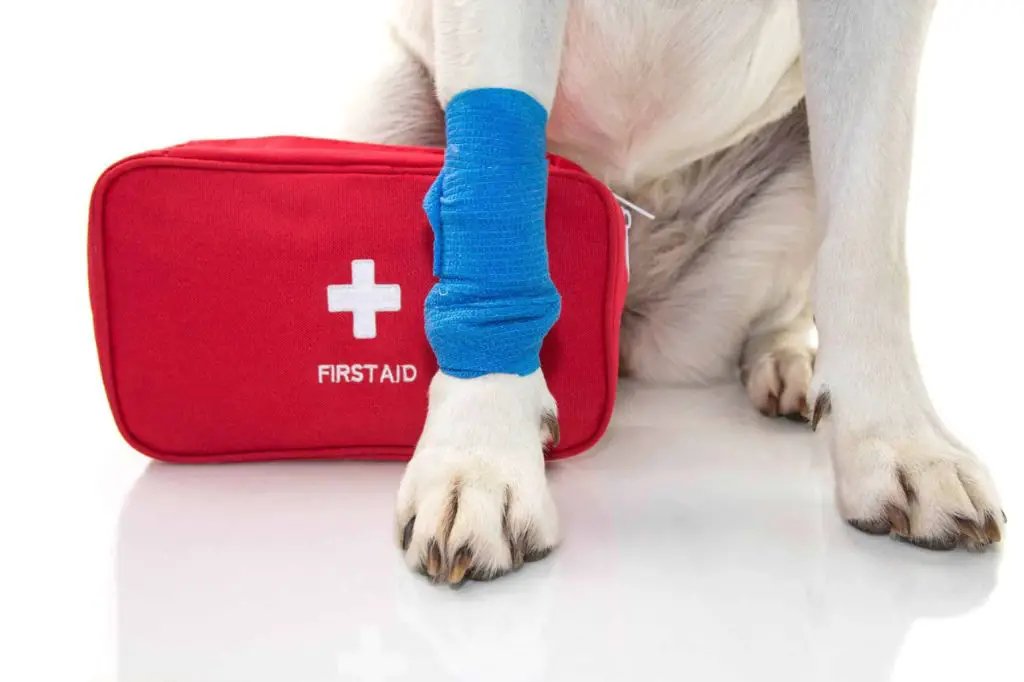Introducing the Question
Dog aggression and fighting is a complex issue that many pet owners struggle with. The question we aim to address is: can vinegar be an effective deterrent to stop dogs from fighting with each other? This is an important question for dog owners who want to keep their pets and family members safe.
Vinegar is often touted as a handy homemade solution for various problems. But does pouring or spraying vinegar actually work to prevent confrontations and attacks between dogs? We will analyze this common claim and look at the evidence behind using vinegar as well as other methods to curb dog aggression.
Our goal is to provide dog owners with a thoughtful discussion of this issue, including both the potential upsides and downsides of utilizing vinegar. There are ethical concerns, practical limitations, and risks involved that require careful consideration. By exploring multiple perspectives, we hope readers will gain a nuanced understanding to make an informed decision for their own situation.
Understanding Dog Aggression
Dogs can show aggression for a variety of reasons. Some common causes of aggression in dogs include:
Fear – Dogs may act aggressively if they are afraid of a person, animal, or situation. This fear-based aggression is a protective reaction and often involves barking, lunging or snapping.
Dominance – Dogs striving to assert dominance may use aggression to gain control. Dominance aggression involves behaviors like staring, growling, stiffening up, or biting when being handled or challenged.
Territorial – Dogs are innately territorial and may act aggressively to guard areas, objects or people they consider theirs. Territorial aggression involves barking, lunging and biting to drive perceived intruders away.
Protective – Dogs may use aggressive displays to guard valued items like food, toys or beds. Protective aggression is commonly seen in parent dogs guarding puppies from perceived threats.
Redirected – Sometimes a dog’s aggression is misdirected toward a person or animal that is not the original target. This often occurs when the dog feels provoked, frustrated or threatened.

Understanding the root cause of a dog’s aggressive behavior provides insight into why the dog is acting in an aggressive manner and can help guide effective solutions to curb the unwanted behavior.
Using Vinegar to Deter Dogs
Vinegar is sometimes recommended as a homemade, natural deterrent to stop dogs from fighting. The theory is that dogs dislike and will avoid the strong smell of vinegar. There are a few ways vinegar could potentially be used:
– Spraying or pouring vinegar directly on the dogs during a fight may startle them and cause them to disengage.
– Applying a vinegar-water solution around an aggressive dog’s space, such as their bed, kennel, or yard could act as a repellent.
– Wiping vinegar on items the dogs fight over like toys or food bowls creates an unpleasant odor that may deter possessiveness.
However, vinegar’s effectiveness is questionable. The strong scent fades quickly outdoors and many dogs become accustomed or desensitized to the smell. Vinegar is also messy to apply and could further agitate aggressive dogs. It should not be used directly on open wounds. Overall, vinegar is unlikely to be a reliable or humane way to prevent dog fights long-term.
Other Methods to Stop Dog Fights
While vinegar is sometimes suggested as a way to stop dog fights, there are several other techniques that can be more effective and don’t carry the same risks:
Training: One of the best ways to prevent dog fights is through proper training and socialization from an early age. Dogs should be taught non-aggressive behaviors and obedience commands. Consult with a professional dog trainer or behaviorist for help.

Avoidance: If you notice signs that your dog is feeling aggressive or territorial, take steps to create distance from the source of tension. Walk away calmly, or put your dog behind a barrier. Preventing fights is preferable to stopping them.
Break sticks: Break sticks are wooden tools used to pry open a dog’s mouth during a fight. They should only be used by experienced handlers, as improper use could cause injury.
Fire extinguishers: A burst of carbon dioxide or water spray can sometimes startle and distract fighting dogs long enough to intervene. But don’t place your hands between the dogs.
Overall, while other techniques exist, they require training and care to implement safely. Avoid putting yourself at risk trying to physically break up a serious dog fight. Call for help or use barriers to separate the dogs as needed.
Ethical Concerns with Dog Fighting
Dog fighting raises several ethical concerns, as it often involves animal cruelty and is illegal in most places. Organized dog fighting is banned in all 50 U.S. states and the District of Columbia, Canada, and many other countries. Allowing two dogs to injure or kill each other for entertainment or profit is seen as unacceptable by most of society. Dogs who participate in these fights are often treated poorly, abused, and exploited solely for financial gain.
Many animal welfare organizations rightly condemn dog fighting as cruel and inhumane. They argue that the dogs involved did not consent to fighting and are forced into these violent confrontations against their natural instincts. The fights often result in severe injuries or death for the participating dogs. Additionally, dogs bred and trained specifically for fighting are prone to aggression against other animals and people, posing a serious public safety risk.
In summary, the intentional instigation of dog fights raises ethical issues due to animal welfare concerns and the illegal nature of the activity in most regions. It is rightfully looked down upon by most of society for glorifying violence and cruelty for the purposes of entertainment and financial gain.
Preventing Fights from Starting
Stopping dog fights before they even start is the safest and most humane approach. There are several key steps owners can take to prevent aggression and fights between dogs.

Socialization
Proper socialization from a young age is crucial for minimizing aggression later in life. Puppies should be exposed to a wide variety of people, animals, places, sights, and sounds in a positive, controlled way during their critical socialization period.
Avoid Triggers
Learn your dog’s triggers that may lead to fights, such as proximity to food or toys, and take steps to avoid those situations. For example, feed dogs separately, remove toys when other dogs are present, and have dogs meet on neutral territory.
Management
Use baby gates, crates, leashes, and other tools to manage your dogs and minimize opportunities for fights. Keep high-arousal interactions like playtime structured and interrupted before it escalates. Always supervise interactions between dogs.
When to Seek Professional Help
If your dogs are fighting frequently or aggressively, it’s important to seek help from a professional animal behaviorist or certified dog trainer. Trying to solve the problem on your own can be ineffective or even dangerous in severe cases of aggression.
Dog behaviorists have advanced education in animal psychology and behavior modification techniques. They can help identify the root causes of aggression and create customized training plans. Behaviorists often begin with a consultation to evaluate your dogs’ body language, signs of stress, relationships, and home environment.
Certified dog trainers have extensive hands-on experience in modifying aggressive behaviors. Look for a trainer certified by a reputable organization. Avoid any trainers who use punishment, pain, physical force, or intimidation. The best trainers focus on positive reinforcement techniques.
A good trainer or behaviorist will work closely with you to implement new routines, remove aggression triggers, teach obedience commands, improve communication, and reset your dogs’ emotional state. With consistent training, most dogs can learn to get along peacefully.
If the dogs already injured each other, take them to a veterinarian for treatment before beginning behavioral modification. Severe fighting may require medications, muzzles, or separation along with training.
Working cooperatively with professionals, most dogs can overcome their issues and coexist calmly. But some dogs have deep-rooted aggression requiring lifelong management to prevent harm.
First Aid After a Fight

Providing first aid after a dog fight is critical to prevent injuries from worsening, while also getting immediate medical care for serious wounds. Even well-intentioned playing can accidentally turn into a fight between dogs, so knowing what to do after is important.
Start by separating the dogs if they are still interacting aggressively. Then take a quick assessment of any injuries. Look for bleeding wounds, limping or inability to move a limb, heavy breathing or coughing up blood, and signs of shock like pale gums.
Apply direct pressure to bleeding wounds with a clean cloth. Do not try to push tissue back in, that should be done by a vet. Wrap injuries with bandage material to control bleeding and prevent contamination.
Gently check for any broken bones or dislocations, but do not try to set them yourself. Restrict activity and movement of injured limbs.
Watch out for bite wounds to the throat, which can affect breathing. Keep the dog calm and quiet until you can get medical assistance.
Take your dog to the emergency vet right away if injuries are severe, such as deep bites or tears, bleeding that won’t stop, obvious broken bones, eye injuries, shock, or trouble breathing. This allows them to assess the damage, get X-rays, stitch wounds, administer IV fluids and pain medication, and provide hospitalization for recovery if needed.
Monitor less severe wounds at home carefully for any changes. Keep the area clean and watch for signs of infection. See your regular vet as soon as possible within 24 hours.
Getting prompt veterinary treatment can help injured dogs heal faster after an altercation.
Making an Informed Decision
When considering whether to use vinegar to deter dog aggression, it’s important to weigh the potential pros and cons of this method. On the pro side, vinegar is relatively inexpensive and easy to obtain. Spraying or wiping vinegar in areas where dogs fight may help create an unpleasant odor that deters them from frequenting that space. Vinegar is also generally considered a safe and non-toxic substance. However, there are also some potential downsides. The effects of vinegar may wear off quickly, requiring frequent re-application. It also may not work well for all dogs, as some may become accustomed or desensitized to the vinegar smell over time. Vinegar is not a standalone cure for serious dog aggression issues either. At best, it may be one component of a broader training and behavior modification program. Dog owners should consider all these factors when deciding if vinegar is worth trying. Consulting an animal behaviorist or trainer can also help determine if vinegar use would be advised or not for a specific situation. Like any training tool, vinegar has limitations and is not guaranteed to work. But as part of a thoughtful approach, it may offer a simple low-risk option to attempt deterring minor dog aggression issues.
Conclusion
In summary, while spraying vinegar may offer a humane deterrent for some mild dog aggression, it should not be relied upon as the sole solution for dogs that frequently fight or have a high prey drive. More intensive training, separation, and professional behavioral intervention is recommended for dogs with serious aggression issues.
Based on the research, vinegar’s efficacy seems limited and situational. It may curb unwanted behaviors or distract dogs momentarily from an altercation, but does not address the root causes of aggression. For severe fighting that risks injury, more reliable methods should be pursued under the guidance of a veterinary behaviorist.
Pet owners want what is best for the health and safety of their dogs. With patience and proper techniques, many dogs can overcome mild aggression or territorial instincts. But some persistent fighting likely stems from breed tendencies, fear, abuse, or lack of socialization, requiring an individualized approach. Overall, vinegar should not be viewed as a one-size-fits-all solution to serious dogfighting issues.